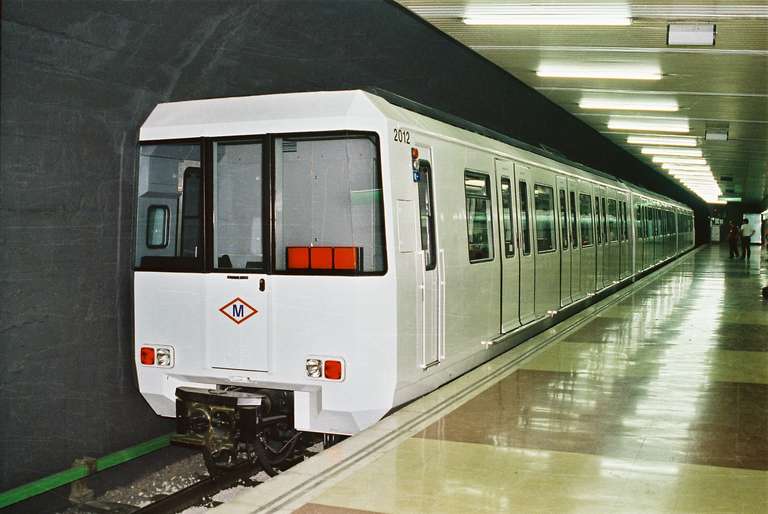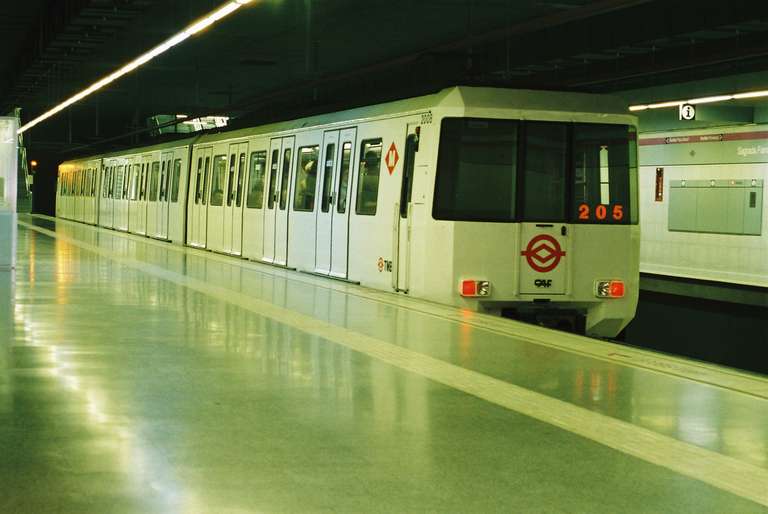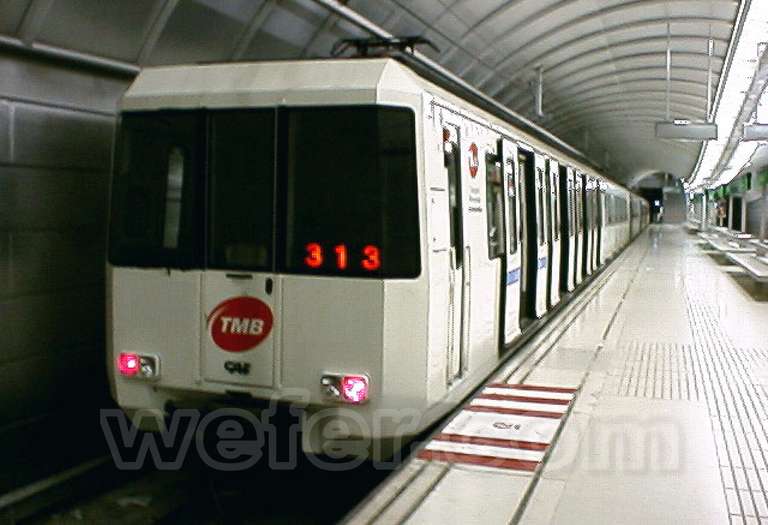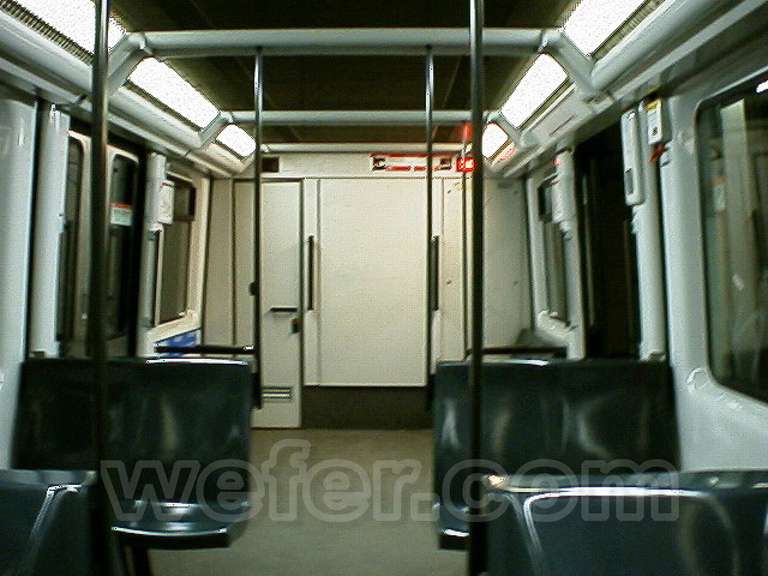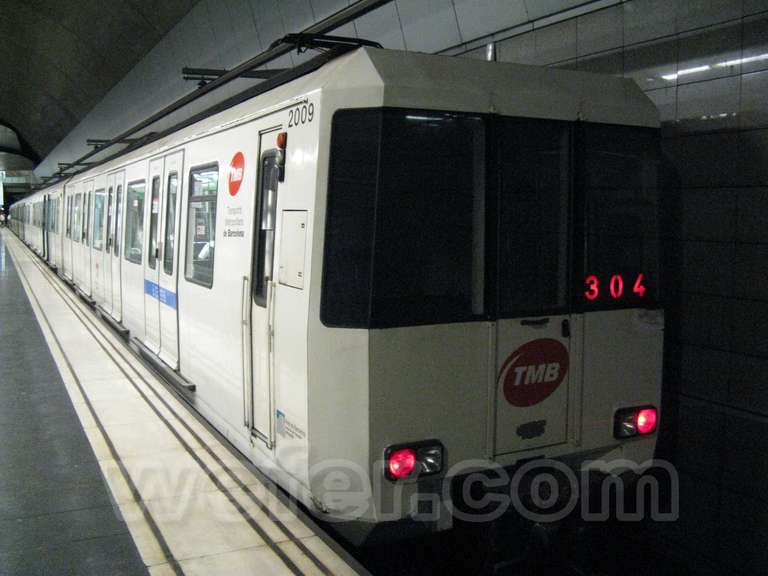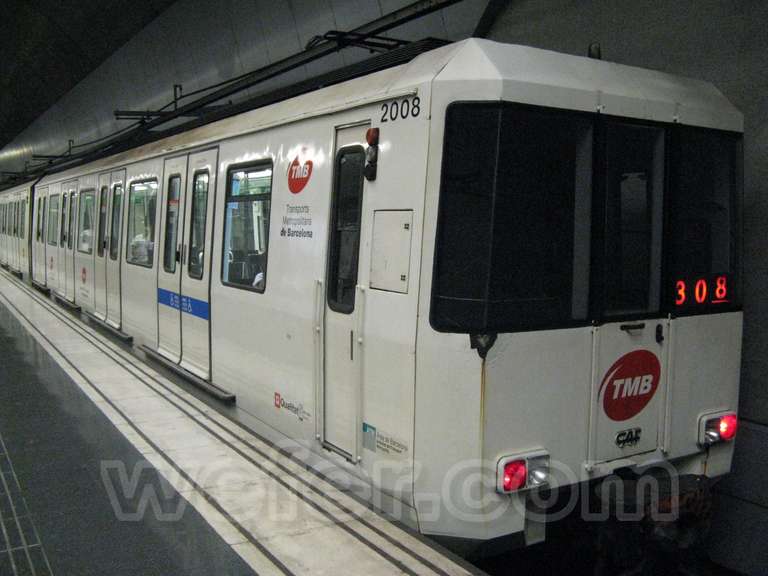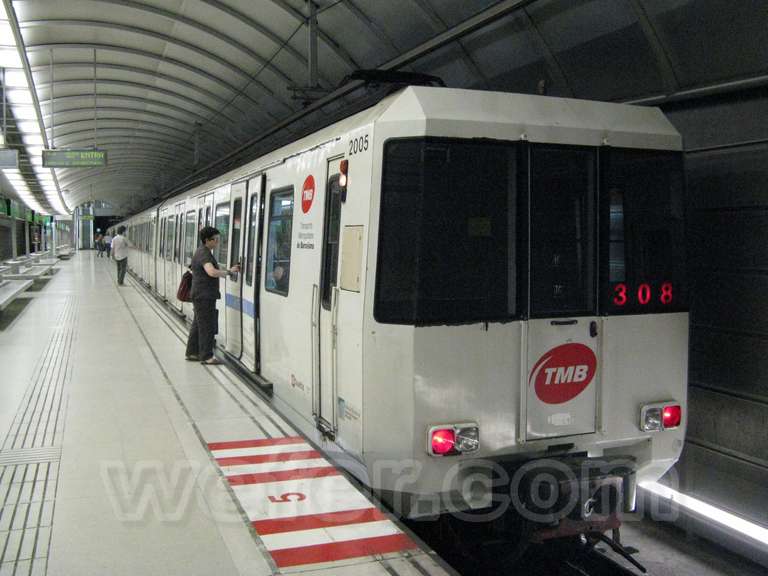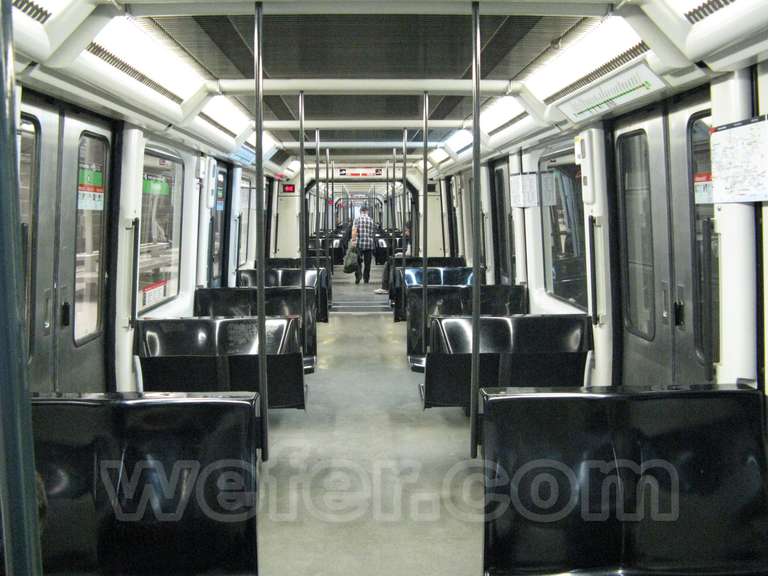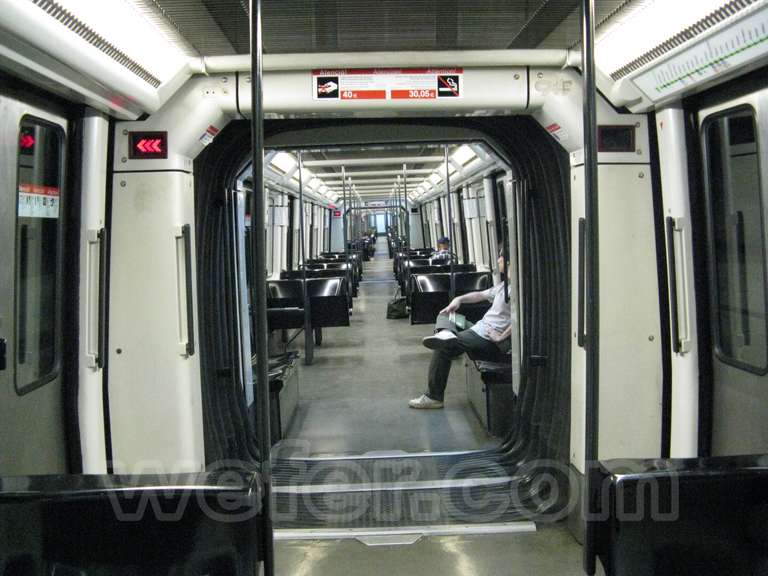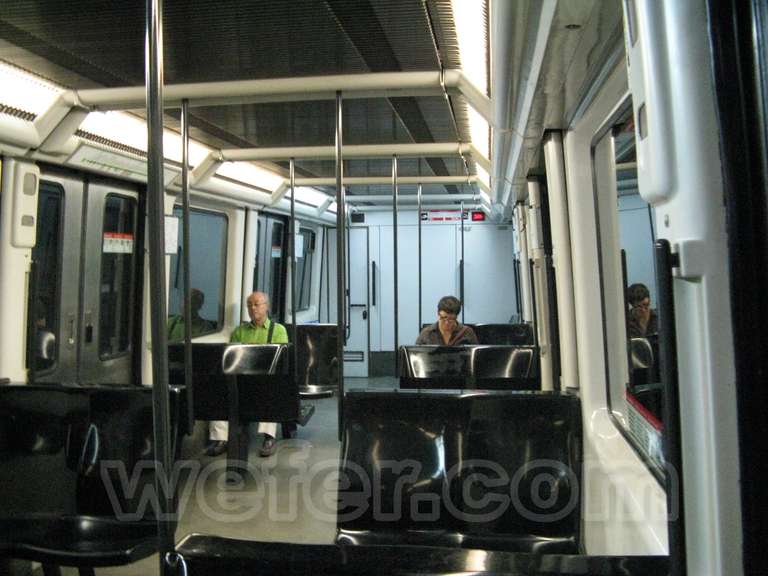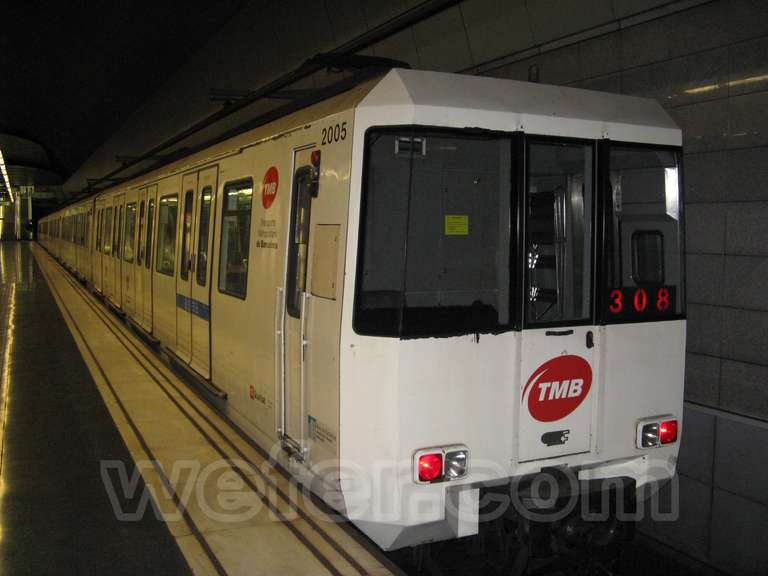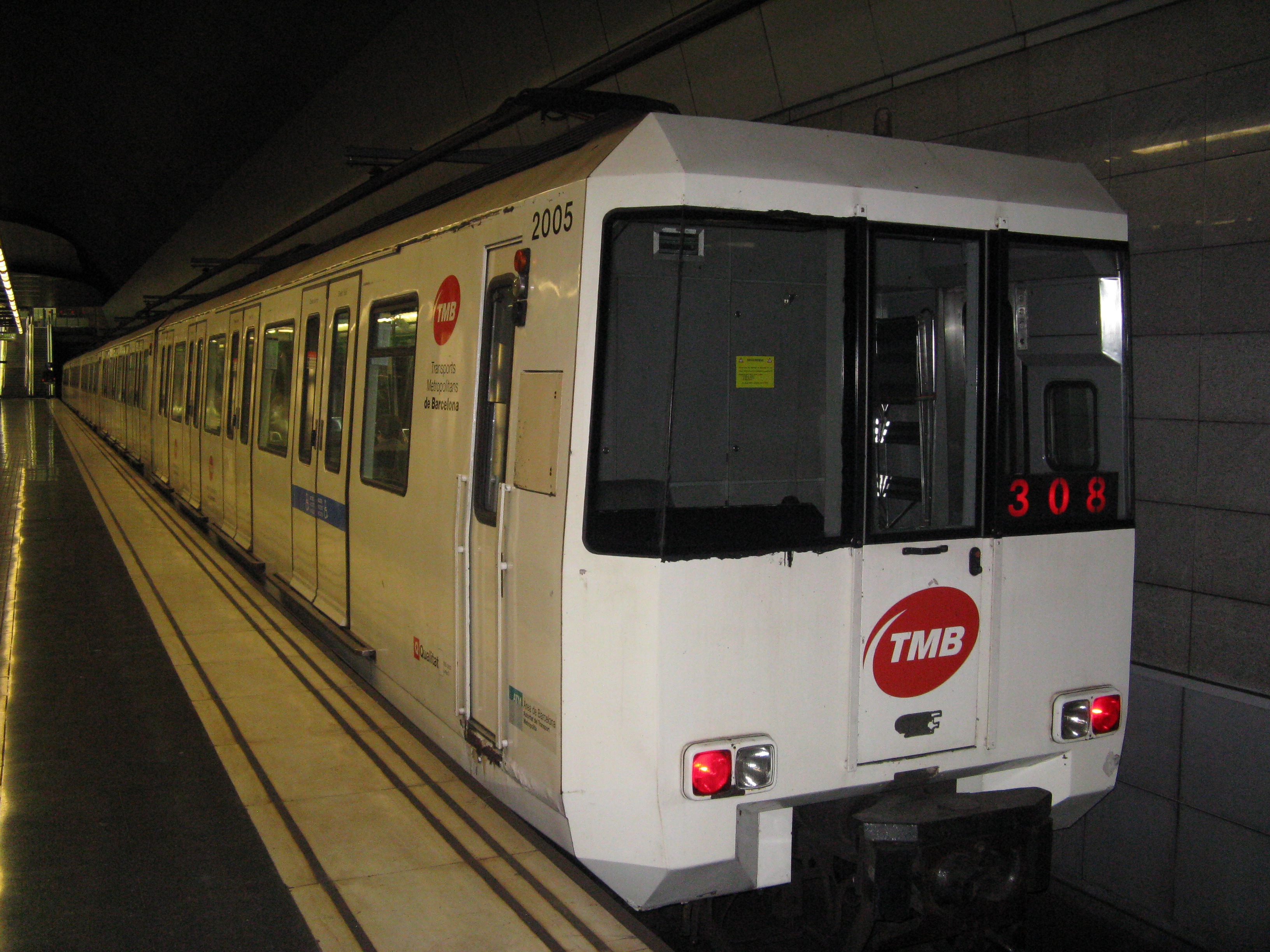
Metro de Barcelona: trens sèrie 2000
Inici --> Metro de Barcelona: material mòbil --> Sèrie 2000
Els trens de la sèrie 2000 del Metro de Barcelona representen un capítol crucial en la història del transport públic de la ciutat. Amb motiu dels Jocs Olímpics de 1992 i l’esperada inauguració de la línia 2, es va encarregar la construcció d’aquesta sèrie innovadora que incorporava avenços tecnològics importants.
Concepció dels trens de la sèrie 2000
El projecte de la sèrie 2000 es va iniciar el 1991 amb l’objectiu de donar servei a la nova línia 2, en el marc de la preparació per als Jocs Olímpics de 1992. La construcció va ser encarregada a un consorci format per CAF, Alstom i ABB Tracción, amb un cost total de 3.100 milions de pessetes. Els 6 trens construïts van ser dissenyats per operar en composicions de tres cotxes, dos motors i un remolc.
La sèrie 2000 va introduir innovacions significatives, com el passadís de circulació Faiveley, que permetia als passatgers moure’s d’un extrem a l’altre del tren sense interrupcions, millorant la distribució del passatge. Això va convertir aquests trens en els primers a Espanya amb un passadís continu i els segons a Europa.
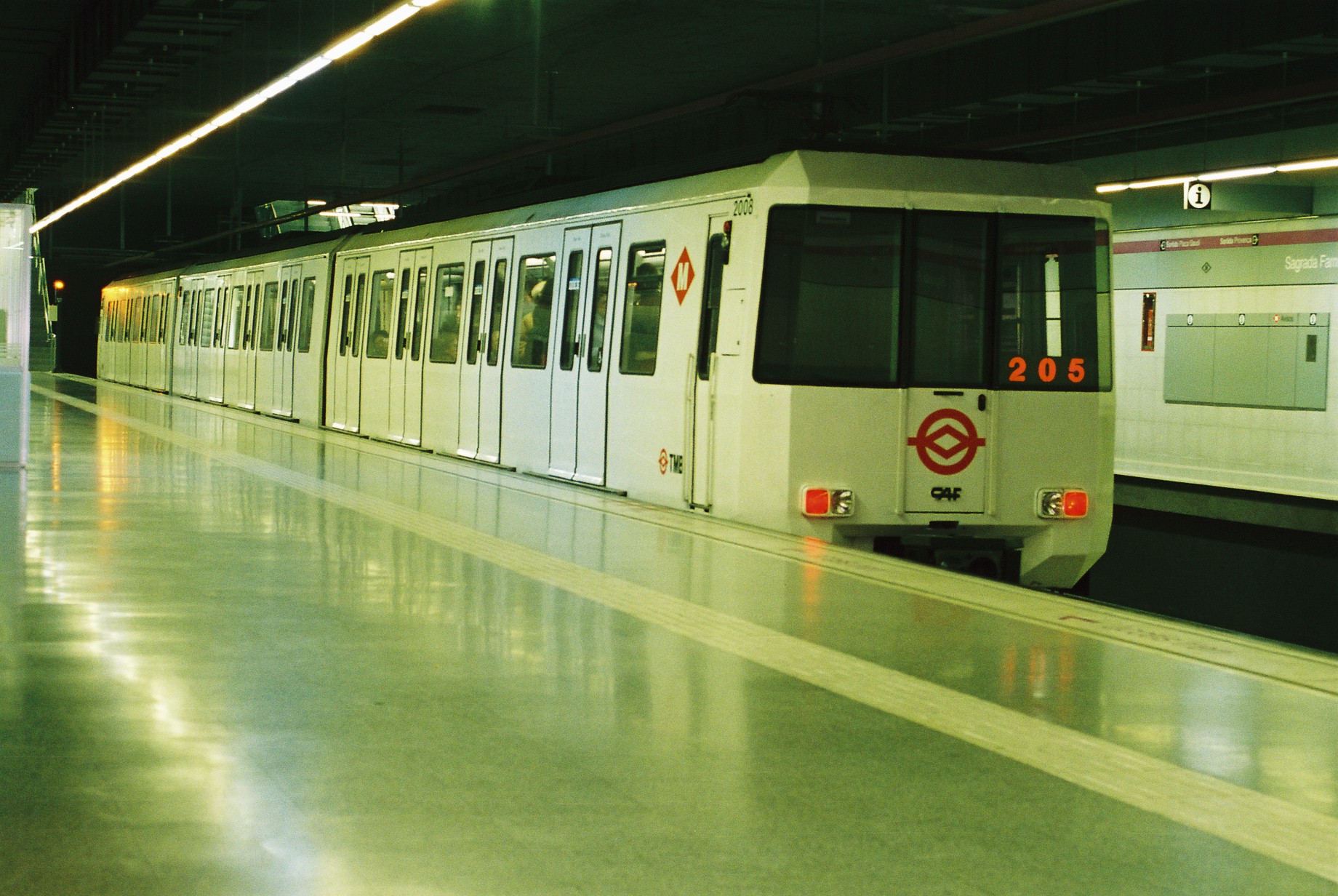
Operació del trens sèrie 2000
Tot i que la línia 2 no es va inaugurar fins al 1995, els trens de la sèrie 2000 van començar a operar a la línia 3 el 27 de juliol de 1992. La numeració inicial dels trens era del 2001 al 2024 per als cotxes motors i del 2301 al 2306 per als remolcs.
El 2001, tres trens de la sèrie 2000 es van transferir a la línia 3 per afrontar l'ampliació d'aquesta línia fins a Canyelles. Posteriorment, el 2003, un quart tren també va ser traslladat a la línia 3 per satisfer la demanda en hores punta.
Amb la inauguració del segon tram de la línia 2, de Sagrada Família a La Pau, el 1997, es va crear la sèrie 2100 que era una versió lleugerament modificada de la sèrie 2000.
Als trens de la sèrie 2000 se'ls van afegir dos cotxes motors a cada tren, per així convertir-los en formacions quíntuples, estàndard de la resta de la xarxa.
Característiques tècniques bàsiques
Els trens de la sèrie 2000 mantenien el projecte mecànic de CAF utilitzat en els trens sèrie 3000 i sèrie 4000, però amb equips de nova generació. Els cotxes motors (MA1 i MA2) estaven equipats amb dos bogis bimotores cadascun, mentre que els remolcs utilitzaven bogis sense motor. La velocitat màxima de 90 km/h. En configuració triple, els trens podien transportar 510 passatgers.
Disseny interior
El disseny interior dels trens de la sèrie 2000 va ser encarregat als dissenyadors Miguel Milà i Rafael Montero. Els seients, amb una composició de seient doble amb peu negre, oferien una integració estètica i funcional que millorava l’experiència dels usuaris.
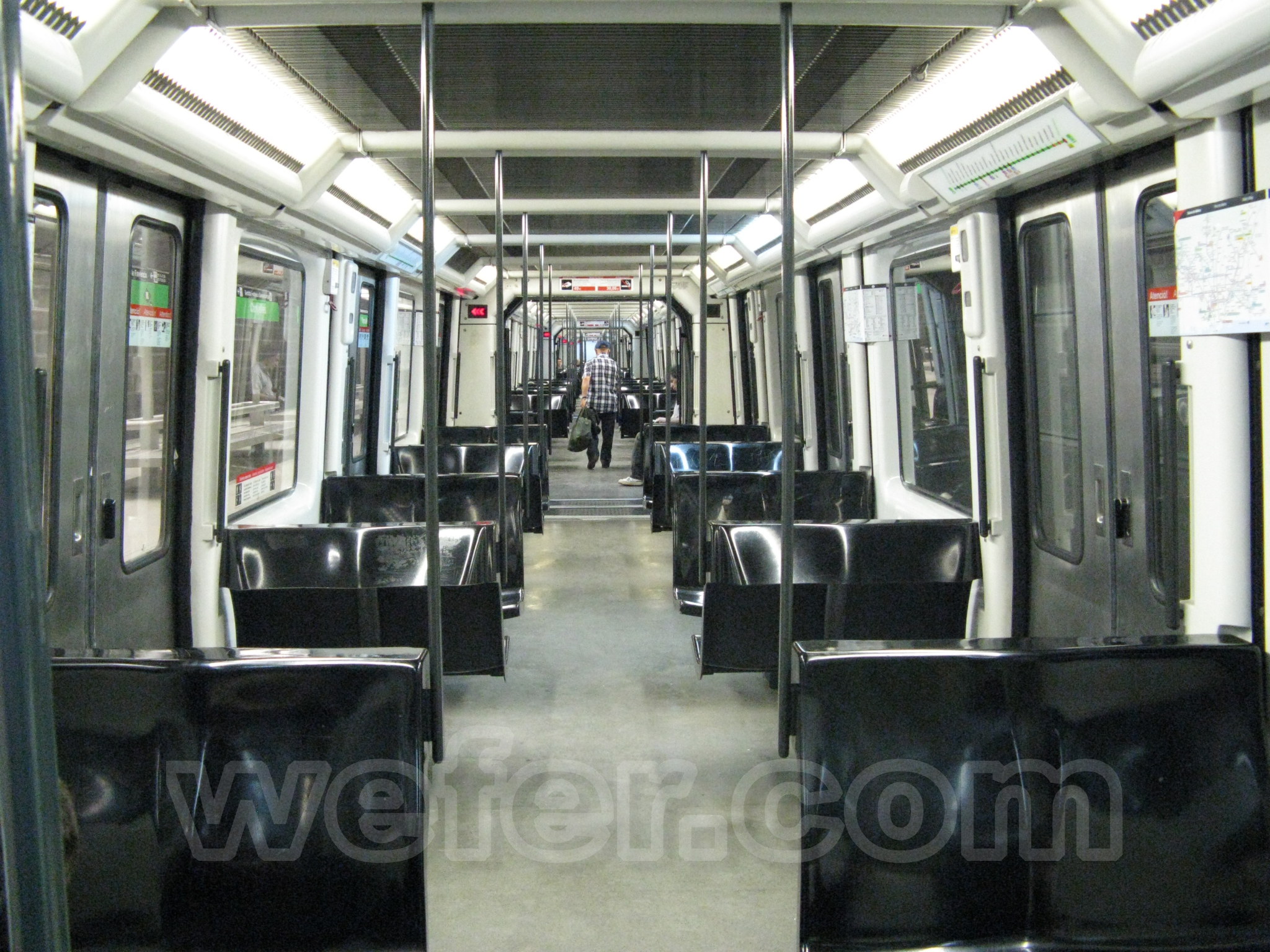
Remodelació i modernització
L'any 2015 va començar la renovació de la meitat de la vida útil de la sèrie 2000.
La remodelació dels trens va comportar la instal·lació de nova tecnologia LED per a la il·luminació interior, la reubicació dels agafadors, i la instal·lació de nous polsadors per a persones amb mobilitat reduïda. També es van implementar sistemes de videovigilància, millores en l’aire condicionat de les cabines de conducció i detectors de presència a la cabina contrària.
Canvis estètics i funcionals
A l'exterior, es va reparar la xapa i es van introduir modificacions estètiques i funcionals com la col·locació de números de tren amb tecnologia LED i indicadors lluminosos laterals. Aquestes millores tenien l’objectiu de modernitzar l’aparença dels trens i augmentar la seva funcionalitat operativa.
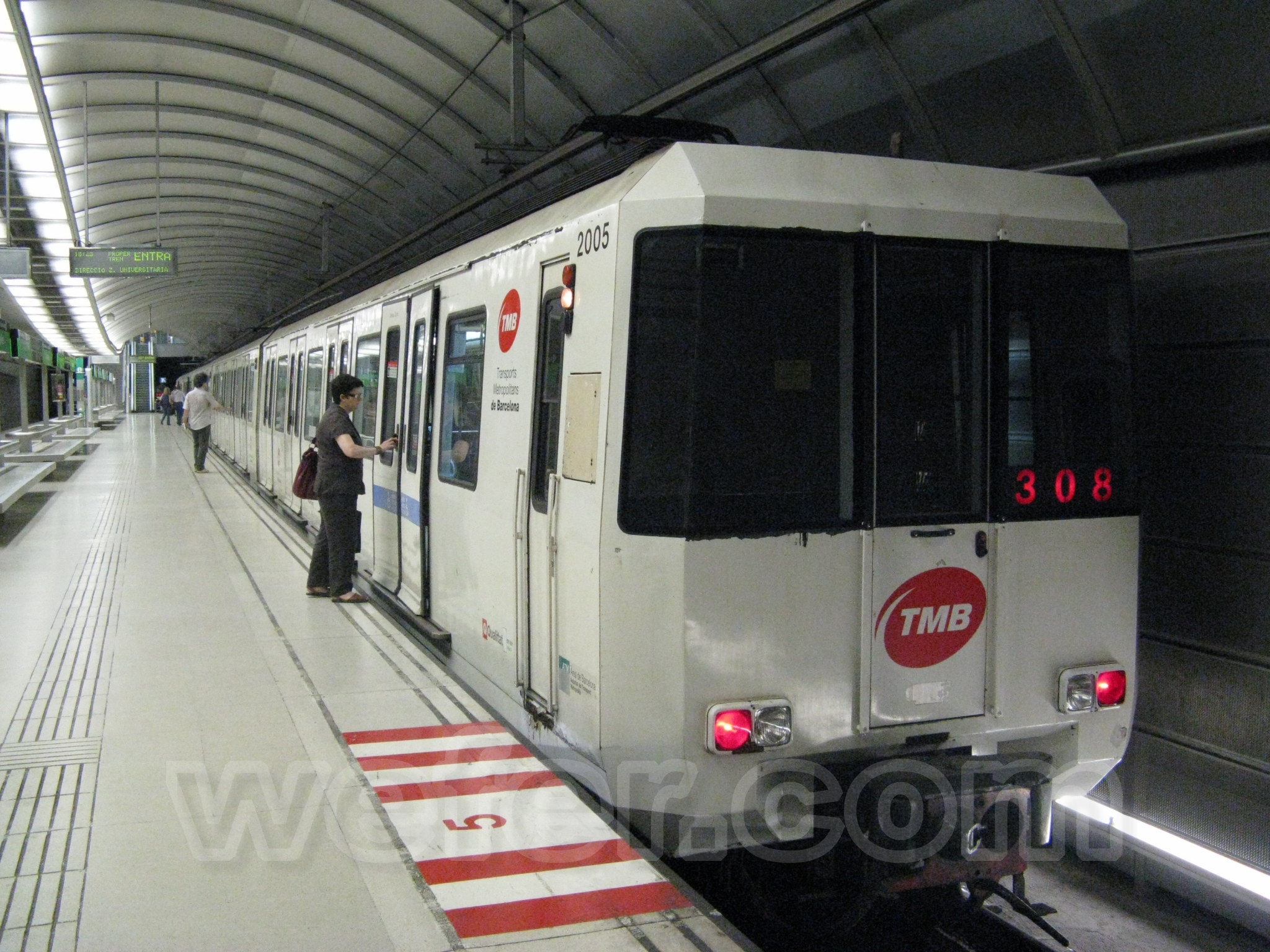
Retirada dels trens de la sèrie 2000
La sèrie 2000 va ser retirada de forma precipitada, abans de temps, degut a la presència d'amiant en la seva construcció. Aquest element, altament cancerígen en cas de manipulació, estava permès quan es van construir aquestes unitats, però es va prohibir poc després. Per aquest motiu els sindicats van exigir la retirada de totes les unitats que tinguessin presència d'amiant de la xarxa de Metro de Barcelona, entre ells les sèrie 2000.
El darrer tren de la sèrie 2000 es va retirar de la circulació el 2024, després de més de 18 milions de quilòmetres recorreguts entre tota la flota. Aquest esdeveniment va marcar la fi d'una era en el transport públic de Barcelona, amb la incorporació progressiva de nous trens de la sèrie 7000 a la línia 3.
La Fundació TMB va preservar tres cotxes de la sèrie 2000 com a part del seu ampli ventall de vehicles històrics. Això hauria de permetre que les futures generacions coneguin i apreciïn els avanços tecnològics i el disseny innovador que van caracteritzar aquests trens.
| CARACTERÍSTIQUES TÈCNIQUES PRINCIPALS | |
|---|---|
| CODIFICACIÓ | |
| MA: cotxes motors extrems amb cabina. | |
| MB: cotxes motors intermedis sense cabina. | |
| Ri: cotxes remolcs intermedis sense cabina. | |
| GENERALS | |
| Unitats construïdes (3 cotxes) | 6 |
| Anys de recepció | 1992/1997 |
| Any de retirada | 2024 |
| Composició original de la unitat | MA1-Ri-MA2 |
| Composició actual de la unitat | MA1-MB1-Ri-MB2-MA2 |
| Potència total de la unitat | 2.400 kW |
| Esforç de tracció nominal continu | 3.760 kg |
| Velocitat màxima | 90 km/h |
| Velocitat nominal contínua | 58.5 km/h |
| Acceleració màxima | 1.0 m/s² |
| Desacceleració en servei | 1.2 m/s² |
| Desacceleració d'emergència | 1.3 m/s² |
| Sistema de frenada | Recuperació, reostàtic i pneumàtic |
| Tensió d'alimentació | 1.200 V= |
| Captació d'energia | Línia aèria rígida |
| Serveis assignats | Viatgers. Línia 2 |
| Constructors principals | CAF, MEINFESA, GEC-ALSTHOM MITSUBISHI ELECTRIC |
| DIMENSIONS I PESOS PRINCIPALS COTXES MOTORS | |
| Longitud total cotxe | 17.125 mm |
| Distància entre pivots | 11.060 mm |
| Distància entre eixos | 2.250 mm |
| Amplada de les caixes | 2.710 mm |
| Alçada total | 3.890 mm |
| Alçada del terra | 1.150 mm |
| Nº de portes per costat i cotxe | 4 de doble fulla |
| Amplada total de les portes | 1.240 mm |
| Amplada de via | 1.435 mm |
| Pes de cada cotxe en buit | 36.170 kg |
| Pes de cada cotxe en servei | 47.025 kg |
| MOTORS DE TRACCIÓ | |
| Nombre de motors per cotxe | 4 |
| Constructor | Mitsubishi Electric |
| Model | MB-3286-A |
| Potència | 150 kW |
| Pes de cada motor | 810 kg |
| DIMENSIONS I PESOS PRINCIPALS REMOLCS | |
| Longitud total cotxe | 17.140 mm |
| Longitud total cotxe | 17.140 mm |
| Distància entre pivots | 11.720 mm |
| Distància entre eixos | 2.250 mm |
| Amplada de les caixes | 2.710 mm |
| Alçada total | 3.890 mm |
| Alçada del terra | 1.150 mm |
| Nº de portes per costat i cotxe | 4 de doble fulla |
| Amplada total de les portes | 1.240 mm |
| Amplada de via | 1.435 mm |
| Pes de cada cotxe en buit | 30.170 kg |
| Pes de cada cotxe en servei | 42.475 kg |
| PLACES | |
| Places assegudes per cotxe motor MA1 i MA2 | 27 |
| Places assegudes per cotxe motor MB1 i MB2 | 36 |
| Places de peu per cotxe motor | 140 |
| Places assegudes remolc | 36 |
| Places de peu del remolc | 145 |
| Places assegudes totals (5 cotxes) | 162 |
| Places de peu totals (5 cotxes) | 705 |
| Places totals (5 cotxes) | 867 |
| ALTRES CARACTERÍSTIQUES | |
| Senyalització a la cabina | ATP i ATO |
| Aire condicionat | Sí |
| Il·luminació interior | Fluorescent |
| Megafonia | Sí |
| Indicadors lluminosos de propera parada | Sí |
| Aparell de tracció i xoc | Scharfenberg |

